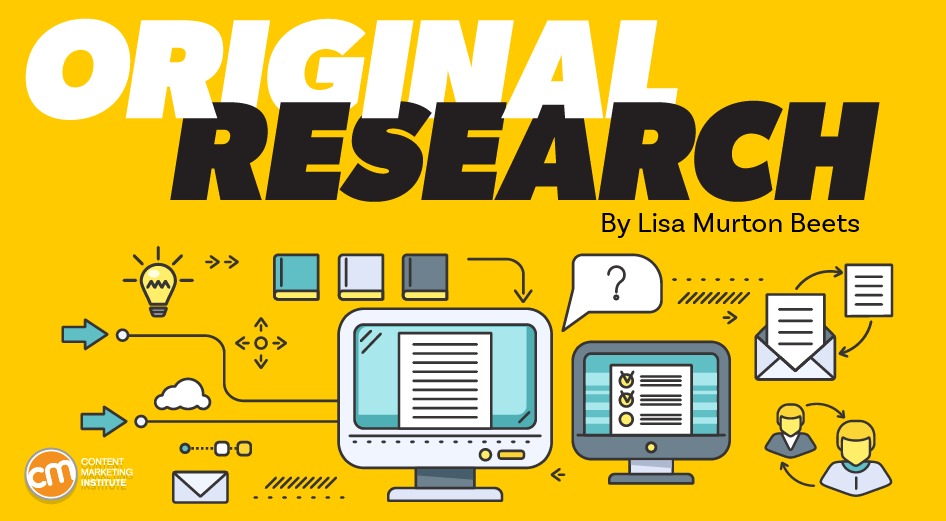Original research makes a unique difference in your content marketing program, but not just anyone or any AI tool can do it successfully.
Before you ask a question, you need to know why you’re creating it (i.e. how it will benefit your audience and your Brand), what format you’ll use to synthesize the findings (e.g. blog posts, ebooks, webinars, videos), and how you’ll distribute the content you create from the findings. You also need to make sure it fits within your organization’s constraints, including budget, staff, and expertise.
But that is not enough.
Conducting high-quality research requires an understanding of:
- Research methods and objectives
- Sampling procedure
- Questionnaire design
- Project management
- Data Analysis
- Report
That means before you conduct a survey, answer these eight questions to build your project on a solid foundation.
1. What is your Goal?
Start with your audience in mind. Research should provide valuable insights for them. Research done for self-serving purposes can turn people off.
Be clear about what you want to learn – and why.
For example, Aha Media and Mantis Research conducted research to help marketers at healthcare providers understand the impact of plain language in B2B healthcare marketing materials. Do readers like plain language? Are they more likely to act on the information? (Spoiler alert: Clarity really is a competitive advantage.)
They shared the research results in webinars, Social Media posts, blog posts, etc. (Check out this article on CMI about it: New Research Reveals Clear Writing Tips for B2B Marketers).
2. Is the Data Available?
Once you have a clear goal, look for any secondary research – published information – on your topic.
Limit the time spent on this stage so it doesn’t get too expensive. Depending on your topic and goals, the amount of potential resources can be huge. A basic internet search or a prompt for a synthetic AI tool can lead to data from industry associations, libraries, government reports, etc. Also, look at your brand’s internal information, such as marketing statistics, sales data, etc.
If you explore existing research well, you may find enough to use and cite appropriately for your content marketing goals instead of conducting new research. On the other hand, your explorations may identify gaps that your research can fill.
If you are conducting an original research project, your goal(s) will determine the methodology. Qualitative research (e.g., individual interviews, focus groups) or perhaps quantitative research (e.g., surveys) – or a combination of both – may best suit your goals.
3. Do you have enough Resources?
To produce reliable results, you can’t ignore it. An original, high-quality content marketing research project takes time, expertise, and budget.
“I’ve been running original research projects for the past 15 years. The most common problem I see with people starting out is that their survey design doesn’t find any interesting themes or stories,” says Clare McDermott, founder of Ravn Research.
“The best research uncovers frictions – insights that are surprising, uncomfortable, or reveal some weaknesses/failures. Designing surveys to tell stories takes experience. That doesn’t mean people shouldn’t experiment with research, but it helps to hire experts who can advise at the survey design stage.”
Among the questions to be answered:
- Who will manage the project? Do you have qualified staff and available time or will you need to hire outside staff?
- Who will design the qualitative survey instruments (e.g., moderator guide, screening questionnaire, question/discussion guide), recruit participants, and conduct interviews?
- Who will design the quantitative questionnaire, program and organize the survey, collect, tabulate and analyze the data?
- What survey tools will be needed?
- Who will write and design the report? Will it be done in-house or will you outsource it?
- Who will develop a content strategy around the insights and distribute those findings?
- How much it costs?
- What are your ROI goals? Are they based on financials, metrics, or something else? For example, do you want to attract X number of new visitors to your website who will convert at Y% rate to Email subscribers? Or do you want to generate X number of qualified leads from research-focused content who will convert at Y% rate to sales?
If you don’t have the expertise on your team to answer these questions, you should invest the time (and money) to learn or find someone who can.
4. Do you have a quality list?

How can you find people who can provide the insights you’re looking for? You can use your own subscriber list, partner with another company, rent a third-party list, use the on-demand list feature in your survey software, or pay for access to a pre-screened pool of participants.
You can distribute your survey in a number of ways. At CMI, we typically email survey invitations to known interested audiences (e.g., B2B marketers using content marketing). Other options include embedding the survey link on your website, including links in blog posts and newsletters, running banner ads linking to your survey, or distributing the link across your social media channels.
Your choice will be based on your goals.
Rather than delve into all the pros and cons of survey list options and distribution methods here, I emphasize the importance of understanding sampling and methodology and having the expertise to address these issues. If not, seek outside help.
5. How will you Interpret the Data?
Once the data has been collected, edited, cleaned, and coded, you move on to the analysis and writing phase.
The research method will impact the analysis. For example, in-depth analysis of qualitative data requires different skills than analysis of quantitative data. Do you have this talent on staff? If not, who will analyze the results for you?
It can be beneficial to have multiple people look at the data. Someone may notice something that someone else missed. This analysis can also reveal findings that require further investigation.
Note: The text and visual presentation of your report—as well as the way the report is written—influence how the market perceives your research. Make sure your writers and designers have a good understanding of how to effectively communicate research, such as not drawing conclusions that aren’t supported by the data and visualizing it in a way that’s easy to understand.
6. What Type of Content will you create?
Your goals will inform your choice of content format. Consider developing these types around your initial research findings:
- blog post
- E-books/white papers
- Seminar
- Video
- Podcast
- Infographic
- Data visualization/interactive graphics
- Interactive Rating
- Live Event
- E-courses
- Training classes
In choosing your format, also evaluate the resources required to create, distribute, and manage that content.
7. Will you participate in the study?
Based on the goals of your research project – and before releasing the content (e.g., a key report, e-book) – decide whether you will require recipients to provide contact information or other information in order to receive the results (i.e., deliver it).
Since CMI’s first research report in 2010, we have never released our annual marketing trends report. The goal of the research is to engage and build audiences by providing useful information for content marketers, not to generate leads. The research helps us build relationships with website visitors, many of whom become newsletter subscribers.
If you prioritize lead generation over the possibility of rejecting leads, make sure your findings are valuable enough that people will be happy to give you their contact information. If you’re unsure, try some A/B testing or run a time-limited study to see how it performs.
8. Are you prepared for the Attention?
Be prepared for the questions your findings will raise. Be prepared to:
- Explain the method and how to explain it.
- Public relations questions on the ground. Reach out to your media relations person as you plan your research to see how they can help increase the reach of your findings. Check out these tips from my colleague Amanda Subler: A Step-by-Step Guide to Getting More Attention for Your Research.
- Respond to questions and comments on social media.
- Respond to interview requests – talking about your research is a great way to generate interest in it.
- Be open to new ideas and questions raised by your research readers. Feedback can be helpful when planning your next research project.
- Keep your sales team informed. Determine what onyour team should do with leads who learn about your product/service through research-related content. How will your team move these people to the next step in their relationship with your company?
TIP: Stay abreast of similar research conducted by your competitors. Review their methods and results so you can intelligently discuss your overall industry research with your audience and team.
Ready for research
There’s no one-size-fits-all approach to initial research in content marketing programs. Take these eight steps to assess your brand’s situation and think through different scenarios. Then you’ll know whether parts can be done in-house and/or outsourced, and how they fit into your overall content marketing strategy.
Source contentmarketinginstitute.com
Comment Policy: We truly value your comments and appreciate the time you take to share your thoughts and feedback with us.
Note: Comments that are identified as spam or purely promotional will be removed.
To enhance your commenting experience, consider creating a Gravatar account. By adding an avatar and using the same e-mail here, your comments will feature a unique and recognizable avatar, making it easier for other members to identify you.
Please use a valid e-mail address so you can receive notifications when your comments receive replies.
